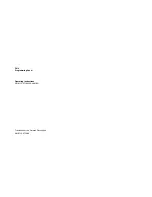
What’s Really Going On?
How Big is a Megabyte, Anyway?
Part I: Getting To Know Your Computer
295
Formatting divides each side of the disk into concentric circles
called tracks. Each track is divided into sectors. Each item of infor-
mation stored on a disk has a specific address composed of its
side, track and sector number. This address makes it possible for
the computer to locate the information on the disk.
How Big is a Megabyte, Anyway?
When you read about the size of your hard disk, you may be con-
fused by the discrepancy between megabytes and millions of
bytes. “Wait a minute,” you say, “doesn’t a megabyte equal one
million bytes?” Well, not exactly...
Computers use base two arithmetic, also called binary arithmetic.
Because of this, all numbers in computing are based on powers of
two. One megabyte is actually equal to 1,048,576 bytes (2
20
), the
closest binary number to 1,000,000.
In the early days of personal computers, the difference was very
minor because hard disks were small and computers didn’t have
much memory. As hard disk capacities and memory sizes have
increased, the difference has become much more significant.
One hard disk that comes with the Portégé 650CT computer holds
approximately 1.26 gigabytes. You can convert this to millions of
bytes by multiplying the number of megabytes (1,260) by the
number of bytes in a megabyte (1,048,576). The result is
1,321,205,760, approximately 1.3 billion bytes.
How Does the Screen Display Information?
Images on the Portégé 650CT computer's built-in liquid crystal
display (LCD) are created by turning individual dots on the screen
on or off in various combinations. These dots are called pixels.
















































